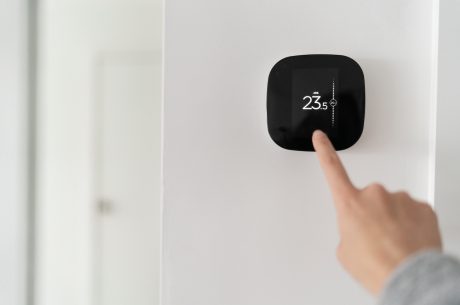
Carbon monoxide (CO) is a poisonous gas that can be safely detected in your home only by CO detectors. This is why it’s extremely important to properly install and maintain your CO alarms and know what to do when one sounds. By staying vigilant about your CO detector maintenance and knowing the appropriate actions to take, you can protect yourself and your loved ones from the dangers of carbon monoxide poisoning.
Table of Contents
Installation Tips
- Purchase CO alarms from a trusted retailer. Choose alarms that are battery-operated or have batteries as backup.
- Make sure CO alarms bear the label of a nationally-recognized testing laboratory.
- Install CO detectors on every level in your home. Follow the manufacturer’s instructions for proper installation.
- Make sure objects like furniture parts or drapery don’t cover the alarm. You can also use portable carbon monoxide alarms when you’re travelling.
- Interconnect CO alarms to provide the best protection. When one sounds, they all do.
- Install both CO alarms and smoke alarms in your home. You can also find combination smoke and carbon monoxide detectors.
Maintenance Tips
- Test CO alarms once a month by pressing the test button to ensure they work properly. Tell everyone in your household that you will be performing a smoke alarm test.
- Replace CO alarm batteries at least once a year. A good time to change the batteries is when Daylight Savings Time ends (in the fall). Also replace batteries if the audible trouble signal sounds to indicate low batteries.
- Replace your CO alarms once every 10 years but make sure to check the manufacturer’s instructions first. Each CO alarm has a different lifespan.
If a Carbon Monoxide Alarm Sounds:
- Alert others in the home and make sure everyone gets out safely.
- Once outside, call 911 immediately. Do not go back inside until emergency services personnel give you the all-clear.
- Seek immediate medical help if you suspect CO poisoning and are feeling dizzy, light-headed or nauseous.
Preventing CO in Your Home
- Have your gas, oil or coal-burning appliances serviced by a technician every year.
- Buy only gas equipment carrying the seal of a national testing laboratory.
- Have your chimney inspected and cleaned every year. Chimneys can be clogged by debris that can cause CO to build up in your home.
- Do not operate gasoline-powered tools like portable generators in or near your house, garage or other enclosed space.
- Never use a gas range, oven or charcoal grill for heating indoors.
- Never run a car or truck inside a garage attached to your house, even if you leave the door open.
The CDC reports that over 400 Americans succumb to accidental carbon monoxide poisoning annually, with an additional 20,000 individuals seeking treatment in emergency rooms nationwide. The main culprits are faulty boilers, heaters, and other fuel-burning devices such as generators. Education and awareness about the risks and symptoms of carbon monoxide poisoning, such as headache, dizziness, and nausea, are also vital in safeguarding lives. By taking these proactive steps, we can significantly reduce the number of preventable injuries and fatalities caused by this silent threat.
For more information on carbon monoxide and smoke detectors, check out how to choose smoke alarms for your home and more tips to prevent carbon monoxide poisoning. For professional fire restoration services or smoke odor removal, contact your local PuroClean office.


